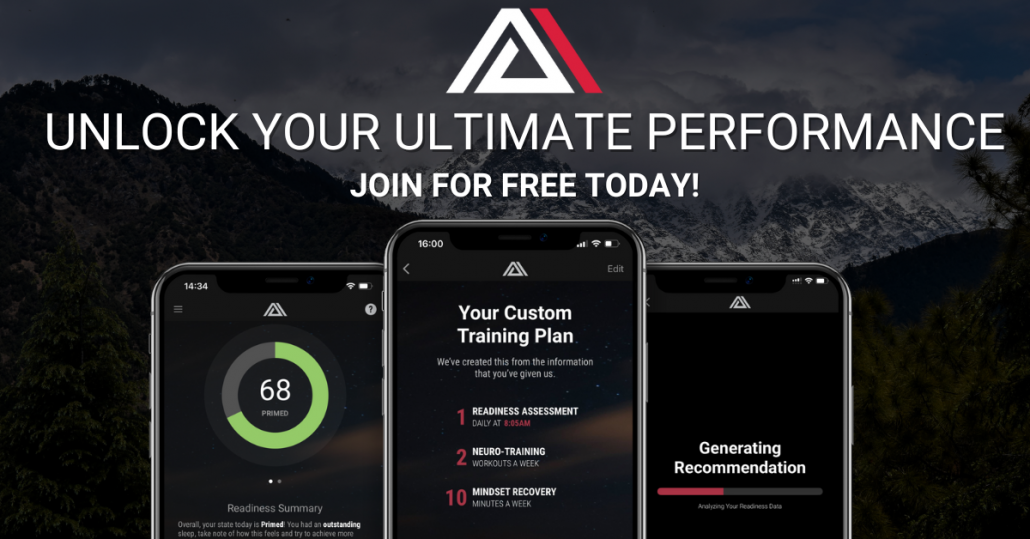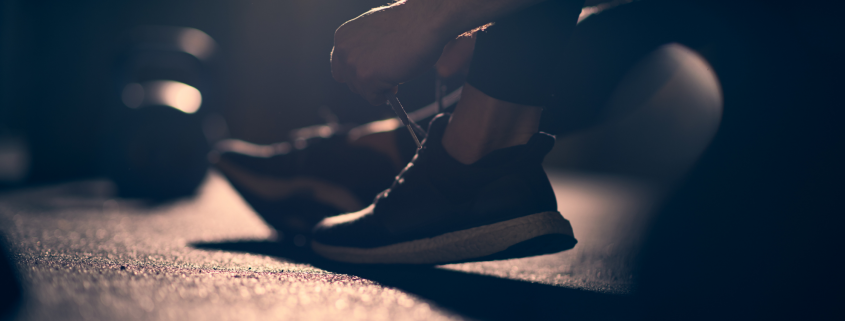Readiness Tracking: How and When to Use the Different Aspects of Rewire
PART 2 – HOW DO YOU USE REWIRE
Readiness tracking is a crucial part of athletic performance preparation. This is abundantly clear from the increasing adoption of various readiness apps and trackers. For more on why Rewire is the app of choice when it comes to comprehensive readiness tracking see this article.
But tracking readiness is only one part of the equation, it is what to do with this information that is key to performance impacts that can be seen from readiness tracking, and what is lacking from some of the trackers.
More succinctly, “what should you do when your readiness is low?”
Given the way Rewire tracks readiness this article will cover a variety of scenarios:
- How should you action overall readiness?
- How should you action cognitive readiness?
- How should you action low physical readiness?
- How should you action low emotional readiness?
It should be noted, but perhaps goes without saying, that managing/avoiding excessive stressors in areas like the emotional realm for example is obviously ideal but not always possible, especially for non-professional athletes.
Overall Readiness
Overall readiness is an indication of the global state of your readiness for the day. It is worth considering this as well as the breakdown thereof, particularly if you have flexibility in regards to work and training schedules.
What to do with High Overall Readiness
This is a green light, go for it.
And to be extra prepared for this, complete a pre-workout priming session.
Note, this may also be a good day for some extra Neuro-training as outlined in this article.
What to do with Low Overall Readiness
The first thing to consider here is ‘why’. What is impacting your overall readiness in a negative way. This has two components, these are; which aspect (or aspects) of Rewire’s readiness breakdown is impacted, but also what is driving that specifically. For example you may have low physical readiness due to poor sleep or hard training.
The reasons to explore this are to better understand how your lifestyle is impacting you to allow you to consider how you may avoid days such as this as well as work out the course of action you can take for that given day.
With low overall readiness, it is worthwhile to consider how you may want to modify your training and other lifestyle factors for the day. This may include removing some intensity and/or volume from training, it is also probably a day to consider reducing or removing any planning neuro-training. Similarly if you have the luxury of modifying your other life stressors this would be a good time to do so.
Regardless of whether you are able to or willing to take the above action and especially if you can’t, this is the time for a mindset recovery session. Rewire recommends mindset recovery sessions specifically geared towards helping you tackle the day given your personal readiness.
Of course, it should go without saying that each part of the breakdown of your overall readiness should be considered in combination with your overall readiness and other parts. These are all interconnected, but the following advice gives some insight into these aspects in a vacuum.
Cognitive Readiness
Cognitive readiness reflects the mental load you have been under predominantly but will reflect the fatigue your central nervous system is experiencing too. This is particularly important for athletes who are planning highly fatiguing central nervous system training such as speed and power training. Or for the time-crunched athlete balancing busy work days and training.
What to do with High Cognitive Readiness
This is an ideal time to do some neuro-training. Take the opportunity to get some good neuro-training done, whether combined with physical training or separately depending on training plans for the day, physical readiness and preference.
What to do with Low Cognitive Readiness
As mentioned above in the overall readiness discussion, considering the source of this low readiness is key to your progress. This may allow elimination or modification to prevent the issue, or indeed alteration of training plans around the stressor better, proactively rather than reactively.
When considering low cognitive readiness your relationship with training and it’s cognitive burden in the context of your full day is extremely important. For some people training is much more cognitively burdensome than others, and this would greatly modify your decision making around this readiness score.
Broadly though, it is likely that modifying or removing your neuro-training plans for the day and completing a mindset recovery session are the two first steps in this case.
Physical Readiness
Probably the most familiar of the breakdown components of the Rewire readiness score. This is the most prominent in most athletes’ minds but should be considered in context of the global training program also. There are times where low physical readiness may be the plan and goal.
What to do with High Physical Readiness
High physical readiness may be the license you want/need to try and do a little extra in training depending on the way your program is structured. If not, it is definitely a green light to get your training session done well.
On days with good physical readiness, a pre-workout-priming Mindset Recovery session will help to really knock the training goals for the day out of the park.
What to do with Low Physical Readiness
Days with low physical readiness are days to really take stock and make ground on your opposition. Yes, you read that right. These days offer some great opportunities to you via a mixture of smart training and using Rewire to its fullest potential to really gain ground on your competition.
Modifying your training on days when your physical readiness is low is a key part of success. This may include reducing intensity, which is covered in the above linked article regarding Rewire as a readiness tracker.
The real strength of Rewire, though, is that you have something you can actively do to aid your progress here, not just removal of training load. There are a few ways to use Rewire for this: firstly using mindset recovery sessions you are able to better recover from your fatigued state and secondly (especially on days with good cognitive readiness) you can undertake more neuro-training.
So whilst you may be modifying your physical training stimulus you do not need to be modifying your total training stimulus, or perhaps better said, you are always adapting, just to different stimuli.
Emotional Readiness
Often harder to appreciate without specific reflection (another strength of the Rewire system), emotional readiness provides some key insights which may be differently relevant in different user populations. Sources of emotional fatigue can vary greatly and are often quite specific to the individual. The impact that emotional fatigue can have on performance is both very real and of significant consequence given the narrow margins in sport.
For some the nature of their endeavors may mean that they find themselves in a relatively emotionally stable situation. This can be by chance or through design, but even those who are typically more emotionally stable might need to be able to perform with lower emotional readiness in the acute time frame. Examples of this may include tactical operators, health care professionals and some sports people.
In contrast, others may see a less stable emotional readiness based on external factors such as work or relationships, which means their readiness is more regularly impacted by their emotional state.
It should also be noted that it is rare for emotional readiness to be impaired in isolation, particularly in professional athletes. Similarly it should go without saying that considering the source of emotional burden should also be sought in all cases of low emotional readiness (though there is merit in finding sources of high emotional readiness too).
What to do with High Emotional Readiness
High emotional readiness should be seen as an opportunity to push yourself in endeavors that may not traditionally be seen as training (and may not be training). It may be a day to try to level up in our neuro-training (if cognitive readiness is appropriate) or take the time to work on some creative endeavors on the work front (for the non-professional athletes).
Having high emotional readiness can at times negate the need for pre-workout priming to a degree given this can be paired with a high degree of excitement/motivation for training.
What to do with Low Emotional Readiness
Given the intertwined nature of emotional readiness, it may be worthwhile considering modifying training as appropriate when considering other aspects of readiness. Regardless, if this is truly isolated low emotional readiness, mindset recovery sessions will aid greatly in this as training with low emotional readiness can be very draining. Similarly if the session is important and cannot be modified, pre-workout priming will play a large role in preparing better for the preparation as performance with a high emotional fatigue is exceedingly difficult.
This is unlikely a good time to do much neuro-training and if this is undertaken, lower levels should probably be done given the high potential for frustration associated with difficulty in these exercises.
Take Home Message
Whilst modification of training is usually an easy answer, it is not always possible. Similarly it may not be optimal in some cases, particularly given the part time nature of many athletes using Rewire. This is where Rewire can aid in the athlete’s journey, by providing actionable solutions and aids in preparation and recovery from training.


Dr David Lipman is an Australian trained Medical Doctor, Podiatrist and Exercise Physiologist. He has worked with athletes of varying levels in all 3 roles. He is an ultramarathon runner, avid physical activity advocate and is passionate about performance in all people.











